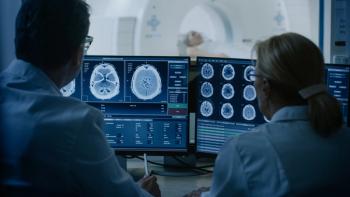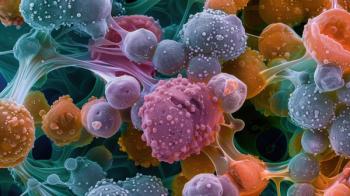
Implications of Biosimilar Use: A Market Perspective
The global market for biosimilars is predicted to grow to $3.7 billion by 2015, according to a recent report by Grant Thornton. Will proposed legislation regarding the interchangeability of biosimilars thwart United States innovation and leave us far behind our European counterparts?
The global market for biosimilars is predicted to grow to $3.7 billion by 2015, according to a recent report by Grant Thornton. Will proposed legislation regarding the interchangeability of biosimilars thwart United States innovation and leave us far behind our European counterparts?
Discussions of biosimilar market penetration that took place at the 8th Biosimilars Summit and a
News of the expense associated with specialty pharmaceuticals has spanned multiple industries, specifically because employers are increasingly concerned about how the cost of
The prospect of
There are significant differences between the 2 situations, however. Unlike small-molecule drugs, which can be easily replicated through chemical processes, complex, large-molecule drugs containing upwards of 50,000 atoms are extremely difficult to produce and replicate. Furthermore, as
Insight into the market: biosimilars around the globe
Although biosimilars have yet to win approval in the United States, they have been approved and are currently in use elsewhere in the world. In fact, there are currently 13 approved biosimilars in use in other countries, and these 13 drugs account for 80% of global market share, according to the Grant Thornton report. European biosimilar manufacturers in particular have
Launching products in emerging markets 4 to 5 years ahead of the United States will allow Dr. Reddy’s in India to gather data before entering the United States market, notes Anshuman Patwardhan, senior director of portfolio strategy, program and alliance management, and intellectual property at Dr. Reddy’s. Recently, at CBI’s 8th Biosimilars Summit in Washington, DC, Patwardhan revealed that Dr. Reddy’s current product portfolio, which includes biosimilars for filgrastim, rituximab, darbepoetin alfa, and pegfilgrastim, will hopefully be marketed in the United States. Through a key alliance with Merck Serono, Dr. Reddy’s may also be able to capture share in additional parts of the world; Dr. Reddy’s has an “early mover advantage with a commercial presence in over 13 countries,” according to Grant Thornton.
Worldwide, there is no unified regulatory framework for the use of biosimilars. Europe has the most defined guidelines when compared to the United States, India, China, Japan, and Latin America. European Medicines Evaluation Agency guidelines demand a “detailed demonstration of quality, safety, and efficacy of biosimilar products” — but, notably, they do not require a biosimilar product to be interchangeable with the branded version. Substitution is not a core principle of discussion in their guidelines. Ultimately, “the policy environment of each region will drive commercial behaviors,” noted David M. Gilman, managing director of the Frankel Group LLC, at the 8th Biosimilars Summit.
Recent United States legislation on biosimilars
The key opinion leaders present at the 8th Biosimilars Summit had differing reactions to the recent
Peter Chakrabarti, director of marketing at Baxter Healthcare, pointed out that FDA Commissioner Margaret Hamburg defended the substitution of interchangeable biosimilars at the Generic Pharmaceutical Association (GPhA) Annual Meeting in February 2013. “Substitutability helped spur the growth of the generic[s] industry and is similarly essential to help foster competition in the biological drug market,” Hamburg
The Wall Street Journal recently pointed out that, in addition to attempting to bar automatic substitution, branded companies are also planning to “delay biosimilar competition to their top-selling products by fortifying patents.” For example, the patent on Enbrel (etanercept), which was originally scheduled to expire on October 23, 2012, was
Meanwhile, Richard Dolinar, MD, chairman of the Alliance for Biologic Medicines, defended the creation of substitution laws in advance of the release of additional FDA guidance. He noted that 15 states are currently considering legislation to regulate biosimilars, and the public should be prepared to handle their use before any are released in the United States. He argued that biosimilars must be introduced without incident, or their adoption could be undermined. Citing survey results from
If the FDA were to deem a drug interchangeable, said Dr. Dolinar, notice to a doctor of a medication switch would not be necessary. Without that designation, he contended, substitution should not occur, and physicians should have the authority (over both payers and state laws) to specify “do not substitute” for biological products. According to the Alliance for Safe Biologic Medicines
Additionally, it is important to note that of the companies holding patents on biologic mediations that are due to expire by 2019, Amgen and Genentech have the largest portions at stake. Amgen could lose $16.3 billion in revenue from the loss of the patents for Enbrel, Epogen, Neulasta, and Neupogen, and Genentech is at risk of losing $10.7 billion when Avastin, Herceptin, and Rituxan go off patent. Taken together, these 2 companies represent nearly half of the specialty revenue that could potentially be lost to biosimilars. To see a full breakdown of these figures, see the graph on page 7 of the Grant Thornton report.
Challenges of launching biosimilars
Manufacturers must also consider other issues with biosimilars beside their status with regard to interchangeability. Because biologics are complex molecules, immunogenicity in the form of antidrug antibodies can potentially occur. As a result, the use of both biologics and biosimilars alike could potentially be associated with serious adverse safety events.
Inference of lower quality
To prevent serious health issues, innovator biologics are required to undergo exhaustive clinical trials to monitor serious side effects. Biosimilars, like generics, are not required to go through the same tests as an innovator product. As a result, some argue that biosimilars are not tested rigorously. However, their proponents point out that, after being tested in in vitro and animal studies, biosimilars usually undergo extensive clinical testing. In addition, as Dr. Reddy’s Patwardhan pointed out, biosimilars are required to undergo “extensive ‘fingerprint-like’ analytical comparisons with the originator product before being tested in animals or humans.” Safety and immunogenicity studies are also conducted, he noted.
The BLA pathway v. 351 (k) pathway
A proposed biosimilar can be submitted to the FDA through a Biologics License Application (a BLA or a 351 (a) pathway) or through a 351 (k) pathway. As a result of the uncertainty surrounding the requirements for approval under the new abbreviated pathway, many companies are submitting their products through BLAs instead of through the 351 (k) pathway. Products submitted through BLAs are not vying for interchangeability, and will be marketed more as competing brands than as biosimilars. In addition, when manufacturers submit a product through a BLA, they do not have to share their intellectual property with the innovator company regarding their manufacturing process as they would were they to file through a 351 (k).
Reimbursement and the payer perspective
From a payer perspective, biosimilars pose challenges. Although payers generally welcome products that offer price discounts, they may be reluctant to switch patients to biosimilars if they are in stable condition using branded biologics. Payers may rely on the assignment of an interchangeability status to cover biosimilar medications, and as a result, this could affect the penetration of biosimilar treatments even if they come to market. Even if a biosimilar were approved as an interchangeable product, substitutability would still be determined at the state level, noted Everett Neville, vice president and chief trade relations officer at Express Scripts.
Pricing differential — is it really worth it?
The cost-saving potential of biosimilars has been greatly touted, but Grant Thornton estimates that the true price differential between a branded biologic and a biosimilar will be approximately 20%. Biosimilars won’t allow for 90% price discounts on specialty medications as small-molecule generics did for traditional drugs when they were introduced, because the development and manufacture of biosimilars is a much costlier process. Manufacturers should still price their biosimilars competitively with innovator products to avoid a “race to the bottom” type of pricing war with the innovator company--however, biosimilars may not be able to match brand discounts and institutional contracting rebates offered with branded medications, so pricing strategies need to be planned carefully.
Naming and the marketing debate
Biosimilar naming conventions are a hot topic of discussion. Follow-on biologics may either have the same International Nonproprietary Name (INN) as an innovator biologic product (which is the naming convention method for traditional small-molecule generics), a modified INN (which is the most likely situation, according to Express Scripts’ Neville), or a completely different INN. The naming of newly released products also impacts their visibility and may in turn indirectly affect their market penetration. In order to combat marketing issues, many of the experts at the 8th Biosimilar Summit suggested beefing up the use of medical science liaisons (in place of traditional sales teams) to educate doctors and pharmacists about the potential benefits and uses of biosimilars, whereas others suggested oncology bundling as a method of attracting new users.
Newsletter
Stay informed on drug updates, treatment guidelines, and pharmacy practice trends—subscribe to Pharmacy Times for weekly clinical insights.


















































































































































































































